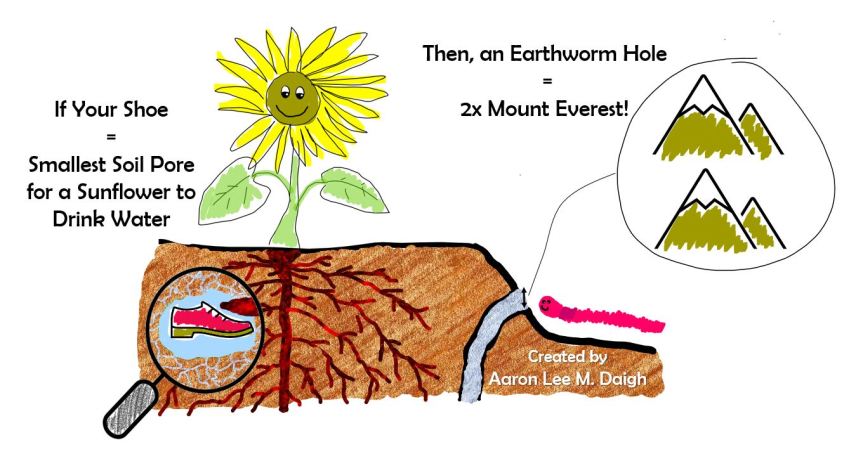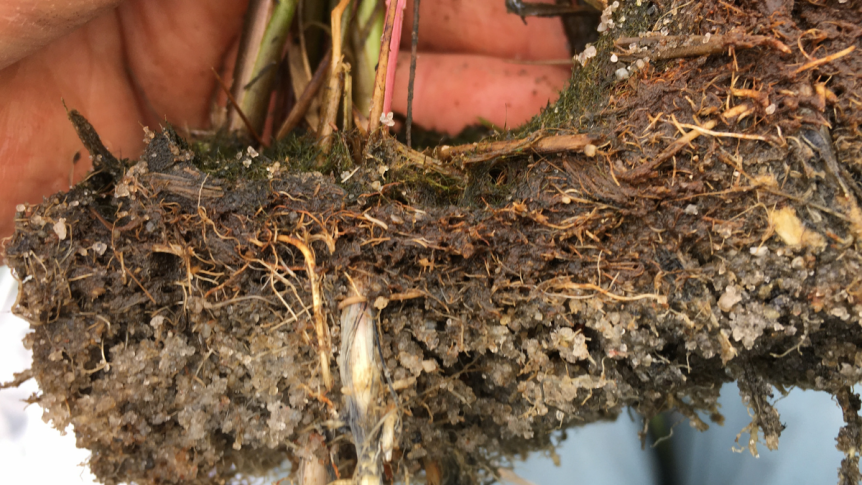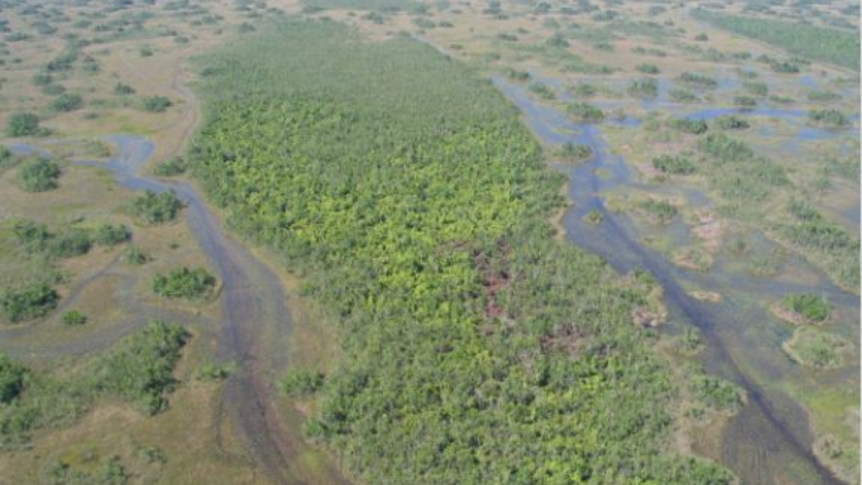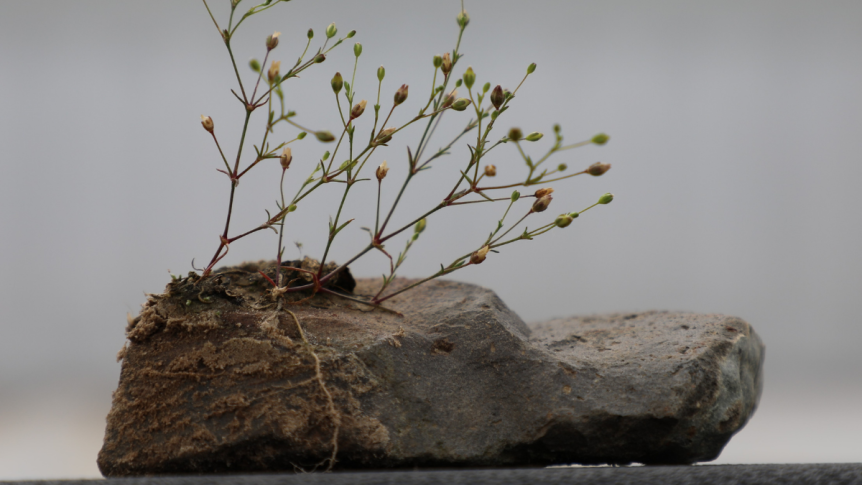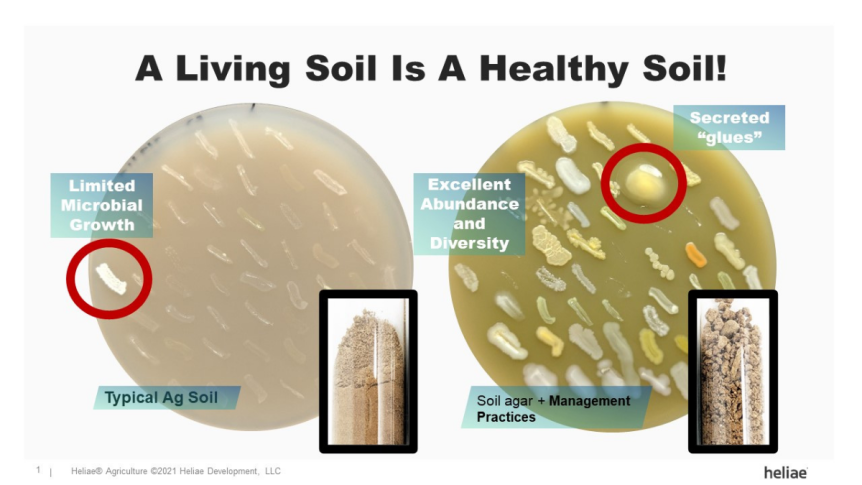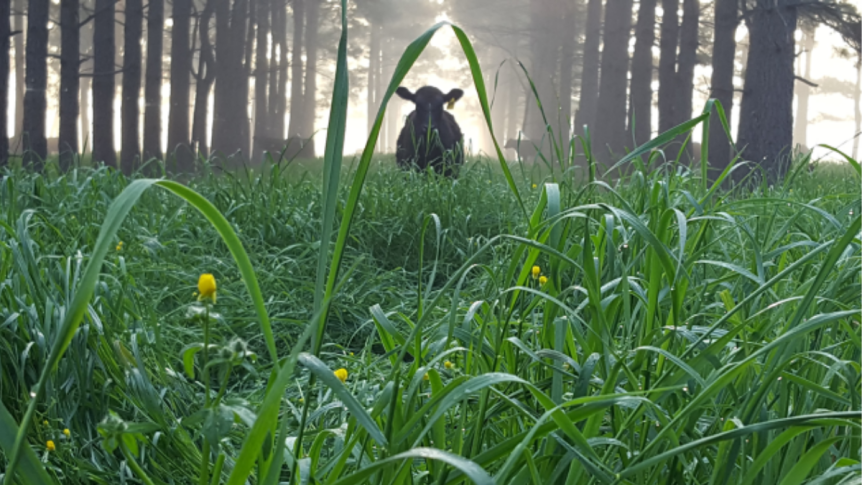Pores are in almost everything. Look closely enough and you will find them in the wood and bricks of buildings, your skin, and the ground beneath. Soil pores are the spaces between Earth’s solid pieces (rocks, sands, silts, clays, and organic matter). A visualization depicting if the smallest pore a sunflower can drink water from … Continue reading What are soil pores?
Category: Life in Soil
How do soil microarthropods affect crop production?
Most people rarely think of the thousands, if not millions, of living things they step on every day. Soil mesofauna are the tiny arthropods that live beneath our feet, ranging in size from 100µm to 2mm, which is comparable to a grain of salt. This intermediate size category of soil arthropods includes microarthropods, a group … Continue reading How do soil microarthropods affect crop production?
What is the Vadose Zone?
Scientists call the region between the soil surface and the groundwater table the vadose zone. It also is often called the unsaturated zone. This zone comprises soil and underlying sediments or bedrock that lie above the groundwater table. The vadose zone contains “the living skin” of our planet, that is, the outermost layer of Earth … Continue reading What is the Vadose Zone?
How do tidal marshes store carbon?
Tidal marshes are wetlands that are covered with incoming tidal water twice a day. These marshes may be as small as narrow fringe along a tidal creek or miles across in estuaries with adjacent flat landscapes. There are nearly 40 million acres of tidal marshes along the Atlantic, Gulf, and Pacific shores of the US. … Continue reading How do tidal marshes store carbon?
What is a tree island, and how does it help with carbon storage?
We explored how coastal areas are capable of storing carbon at a great capacity in a recent blog. The Everglades in southern Florida are also known as a reserve of carbon storage. Some areas of the Everglades have “tree islands” and a recent study showed they are capable of storing more carbon and other nutrients … Continue reading What is a tree island, and how does it help with carbon storage?
How does young soil support plant life?
In order to grow well, plants need a place to grow, access to nutrients, and in most cases sunlight. A rich soil provides that home and a good supply of nutrients. But young soils have less to offer – yes, soils can have different ages ranging from hundreds to thousands to millions of years old. … Continue reading How does young soil support plant life?
What is Trichoderma and how is it beneficial?
Have you ever wondered about the living organisms in the soil? Let’s dig into the soil today and meet our very special friend. We will be learning about the secret abilities of this friend and how this tiny friend shows friendship to us. Our friend has a cool Latin name “Trichoderma.” Trichoderma is a genus … Continue reading What is Trichoderma and how is it beneficial?
What is the current research about soil additions to help soil biology?
Improving soil health on farm fields integrates the three types of soil management: physical, chemical, and biological. Physical management includes how farmers use their equipment on fields – tilling, harvesting, etc. Chemical management involves the timing and choice of fertilizers, manure, and other additions. Soil biology is the next frontier being researched for optimizing soil … Continue reading What is the current research about soil additions to help soil biology?
What drives roots’ decomposition and carbon storage in grassland soils?
You most likely know that roots are important for grasses to grow, but the roots help do other things, too. They build soil carbon and support other life forms in soil. But did you know that various management tactics can force grass roots to break down, decompose, and add to the stored carbon pool in … Continue reading What drives roots’ decomposition and carbon storage in grassland soils?
What is soil made of?
Soils can look like they are a homogeneous material. But in reality, soil contains solid particles of different sizes and different types. Some of the particles are minerals, and others are organic matter. There are spaces between the particles called pores. These pores may be filled with air or water. Soil is a mixture of … Continue reading What is soil made of?

